Becoming Doctors, but First Studying the Liberal Arts
By Rebecca Goldfine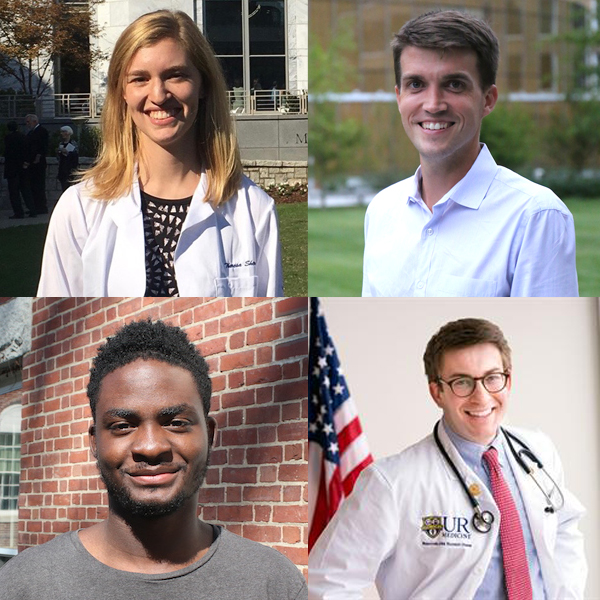
While some students may express some worry about this, Ramus, who is the director of health professions advising at Bowdoin, can reassure them that this is good news. The Bowdoin curriculum offers these future doctors an opportunity more valuable than a “pre-med” list of courses. What their four years here give them, Ramus explains, is the opportunity to pause before beginning their profession, look around, and discover what they love to study and do — whether it is majoring in art history or mentoring middle schoolers. “I hate the notion of a track,” he said recently. For him, it suggests a conveyor belt, and too bad if you fall off. “I say instead that it is really about finding your own story and your own pathway.”
In consultation with a committee of faculty members, Seth Ramus writes a personalized three-page letter for every Bowdoin student who applies to medical school. (That is, for those "who meet my deadlines," he emphasizes, with a short laugh). This includes alumni up to six years out of Bowdoin.
While this message might sound odd to students at first, Ramus’s advice to explore their interests can actually help them achieve their goals, and eventually become a better doctor. These days, medical schools are looking for someone who has done more than take all the pre-requisite science courses by their junior year. “They don’t think you’re a better candidate because you’re a biochemistry major or an English major,” Ramus said. “What they do care about are the deep dives, when you engage your learning passionately.”
In the past decade, medical schools have moved further away from a model of educating doctors who are good at rote memorization. Instead, the schools want to prepare physicians to be, in a sense, analytical empaths: people who can listen to patients' stories, sift through lots of information, and then come up with the best healing regimen.
And this new medical landscape can make liberal arts colleges like Bowdoin well-suited to serve as the foundational training ground for future doctors.
"Those humanistic traits — problem solving skills, interpersonal skills, and teamwork skills — are all the hallmarks of a liberal arts education," Ramus said. "Medical schools are evaluating the kinds of students these are: Are they the deep divers? The synthesizers? The students who ask good questions? The team learners? Medicine is a team sport, so they're looking for evidence of group learning."
This outlook can also be freeing for Bowdoin students as they assess the College's course offerings. "It encourages students to think broadly about their education, to engage in it instead of marching through pre-req courses and doing what they think they should be doing," Ramus said.
At Bowdoin, roughly eight percent of students head off to medical school. Acceptance rates are incredibly competitive, and Bowdoin students have done very well. In recent years almost nine out of ten who have applied have been admitted. Last year it was 97 percent. (Bowdoin counts the students who have received a reference letter from the College. See the sidebar for more information about this.)
"The reason Bowdoin students do so well is partly because of our culture of engaging deeply," Ramus said, an attitude that extends beyond academics. He noted that Bowdoin students have the chance to explore service through the McKeen Center, to organize programming through the Student Center for Multicultural Life, to do research with faculty, to lead outing club trips, and more.
The 147 medical schools in the US — whose acceptance rate generally hovers in the single digits — admit students who have proven themselves. "You have to show that you have compassion and empathy," Ramus said. "You have to show that you have leadership skills. You have to show that you have cultural competency by working with communities and people who are different from you. You have to understand, through your own experiences, why you want to be a doctor."
Below are brief profiles of a few Bowdoin alumni, and one student, and their paths to medical school:
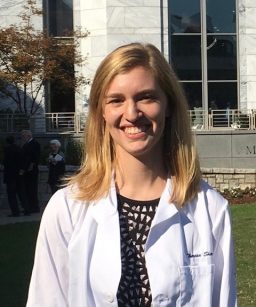
Tracey Shirey '14
When Tracy Shirey ’14, who is in her second year at Emory University School of Medicine, graduated from Bowdoin, she headed to Washington DC as an AmeriCorps volunteer. For two years, she worked at a downtown community health center, focusing on HIV testing and counseling. At this clinic, she said her decision to go to medical school was confirmed over and over every day. “It was incredibly rewarding for me to be able to discuss difficult and personal topics with people, educate them, and work with them to build a plan to reduce their HIV and STI risk all in a single, brief counseling session,” she said. “It was exhausting work, and exciting work, and the hardest thing I’d ever done. And I looked forward to doing it every day.”
At Bowdoin, Shirey majored in biology and Africana studies. As she worked on her honor’s thesis in Africana studies, she kept coming back to the idea that, if she were to become a doctor, she could “use this wealth of science and help, through medicine, to chip away at the legacy of segregation, this difference, this inequality” that she was learning had its roots in history but was being reinforced every day by current societal structures.
Besides her academic studies, Shirey credits her time playing softball at Bowdoin for preparing her for medical school. Besides gaining experience being a team player, she also became comfortable accepting setbacks. “The thing about softball and baseball that is unique from other sports is you fail a lot, batting-average wise. A good average is around .300, which means seven out of ten times you’re up to bat, you’re not getting a hit,” she said. “In medical school, you’re going to feel like you never know enough all the time. You’ll get seventy percent on an exam, and that will be good enough.”
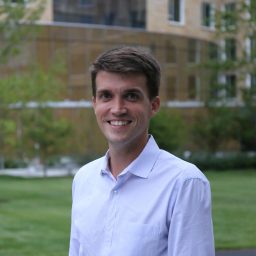
After Brian Powers graduated from Bowdoin in 2010, he, like Shirey, went to DC. He worked for two years for the National Academy of Medicine, a nonprofit in Washington, D.C., that analyzes US healthcare policies for the government and other stakeholders.
But before he ventured into healthcare, Powers tried out the hospitality industry. As an undergrad, he spent a summer learning restaurant management at the New York City restaurant Gramercy Tavern. For a time, he was seriously weighing a career in the restaurant business before choosing to focus on medicine and business (he has an MBA and an MD from Harvard University). He now encourages students interested in medicine to spend time working in a service industry. “Take time to see if you really enjoy serving customers day in and day out, and all of the joys and challenges it brings,” he said. “Amidst pre-med requirements and laboratory research, readiness from an interpersonal and service-minded perspective is sometimes glossed over.”
At Bowdoin, Powers majored in history and biology, two disciplines he said helped him succeed at graduate school. He is now an internal medicine resident at Brigham and Women’s Hospital in Boston. “Science courses at Bowdoin focus on understanding and applying fundamentals, not memorization,” he said. He recalled his comparative physiology course, where tests were open-book, and focused on mythical creatures, forcing students to apply knowledge in new settings. And his history studies pressed him to “think critically, simplify complex problems, and structure decisive arguments.” He draws on these skills daily in the hospital when explaining complex diagnostic and treatment decisions to patients and their families.
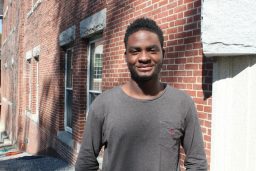
Because the track to medical school is different for everyone, some undergraduates take a steady, focused approach to getting there. Donald Detchou ’19 applied to medical schools his sophomore year, and he’s been accepted to both the Icahn School of Medicine at Mount Sinai and to the University of Pennsylvania’s Perelman School of Medicine (he’ll start at UPenn after he graduates from Bowdoin).
Detchou began to contemplate being a doctor when he was in middle school, and after considering other fields, like business, computer science, and law, kept coming back to medicine. By high school, he said, “I knew I was pre-med. I had a plan. I just had to follow through and see what would come out of it.” Yet despite his focus on taking all the prerequisite classes, he is still branching out academically. Detchou is majoring in neuroscience and Francophone studies and minoring in Africana studies, while also taking lots of chemistry classes.
The son of immigrant parents from Benin, Detchou was twelve and spoke no English when he moved to the US. Now he makes a point of volunteering with and translating for refugee communities, helping others, particularly younger students, learn English and to assimilate. He said he selected UPenn because of its focus on public health. “They have satellite offices in parts of Africa, and an influence around the world,” he said.
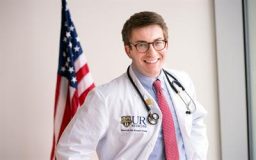
David Bernstein ’13 also took time between Bowdoin and University of Rochester’s business and medical schools to attend the University of Luxembourg as a Fulbright scholar. He will graduate from University of Rochester in 2019, with both an MBA (which he earned in 2016) and an MD.
At Bowdoin, Bernstein majored in economics and minored in anthropology. But he said many of the courses he took across the curriculum equipped him with problem-solving skills. He recalls a government class in particular, taught by Professor of Government Michael Franz, that reinforced the importance of coming at issues from all sides. For one assignment, Franz assigned each student to be a US senator representing one of the fifty states. Students were then asked to come up with a firm viewpoint on a legislative topic. “And then he asked us to write a bill with all the evidence supporting the likely opinion of a senator from that state even if it did not match your own,” Bernstein said. He added later,”Bowdoin teaches you to listen as much as it teaches you to share your opinion.”
And while his academic course load honed his critical thinking skills, Bernstein said it was his time playing baseball at Bowdoin that taught him how to be part of a team. “This is critical to medicine, and to life,” he said. “Things don’t always go your way, but if you have a true support network and approach problems together, the sky is the limit…and if you don’t achieve a given goal the first time you attempt it, you go on, you don’t give up.”
He concluded, “Bowdoin trained me to interact with people from all walks of life; my education had a focus on active listening, thinking critically and problem solving, and I think (and hope) all those skills are what differentiates a great doctor and leader from a good one.”
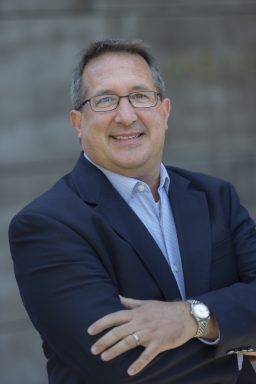
How Bowdoin Helps
In consultation with a committee of faculty members, Seth Ramus writes a personalized three-page letter for every Bowdoin student who applies to medical school. (That is, for those “who meet my deadlines,” he emphasizes, with a short laugh). This includes alumni up to six years out of Bowdoin.
Ramus can write effective letters of recommendation because he makes a point of getting to know pre-medical school students as well as he can, starting during orientation, for some, and continuing through senior year. He schedules 700 meetings a year with students. Those who decide after leaving Bowdoin that they want to go to medical school also can contact Ramus. “I’ve [recently] been working with someone from the class of 1987,” he said.
Listen below to Bowdoin President Clayton Rose speak about the value of a liberal arts education.